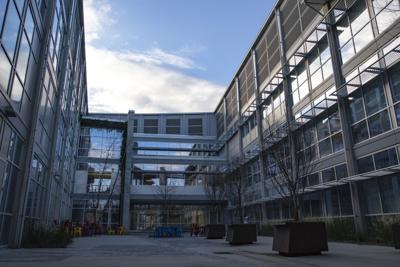For Temple Douglass, a University of Georgia student majoring in art with an emphasis in drawing and painting, art has always been her favorite hobby. However, she found her experience with the majority-white student population and faculty in the Lamar Dodd School of Art to be annoying and uncomfortable.
As part of a push for diversity, equity and inclusion of underrepresented students, the art school’s Solidarity and Justice Task Force and Committee initiated the formation of the Black Artists Alliance. The organization, run for and by students, aims to provide resources and a source of community for Black, Indigenous and People of Color visual and performing artists of color across campus.
Community and accountability
Ronika McClain, a master’s degree candidate in the art school, was part of the task force. She said the group was founded to hold administrators accountable for their solidarity statements with the Black Lives Matter movement.
The art school released a statement recognizing the historical oppression of Black people, condemning racism, and working toward a more unified program “where all voices are equally heard.”
“Lamar Dodd School of Art commits to moving forward in seeking racial justice by creating safe spaces for the voices of People of Color and engaging in thoughtful listening and constructive dialogue, while showing care and understanding for all people,” the art school said in a post to its website.
Lindsey Reynolds, UGA’s art librarian and chair of the task force, said the main preliminary goal of the task force was community listening. The task force, composed of faculty and students in the art school, collected students’ surveys and letters and held a student-only town hall to compose a list of action items for art school administration.
Through this listening, some major student concerns regarding systemic racism and inequity were brought to light.
An issue students of color found prevalent was the challenge of having their art critiqued in a space dominated by white students and professors. Critique is the basis of the grading structure in visual art classes where peers and professors offer constructive feedback through conversation.
“When the people giving you feedback don't necessarily intrinsically understand the nuances of what it means to be who you are it can be very alienating, especially if the work deals with painful subjects, or really emotionally specific or racially specific themes,” said Alys Barrow, a fifth-year art major with an emphasis in photography and the leader of the BAA.
Several art students of color described frequently being the only or one of few people of color in their art classrooms. Critiques are not only limiting because of the primarily-white setting — Barrow said they compound the emotional labor of being a student of color at a primarily-white institution.
“People [white art students and professors] are either reticent to talk about race issues, they don't feel comfortable or they are microaggressing students in the classroom,” McClain said.
Searching for a community
Because the art school is composed primarily of white students and the course tracks for areas of emphasis are highly specialized, it can be difficult for Black art students to form a community, Barrow said.
“The chances that you really intersect with people that are also minorities in terms of going about your life and homework, that's a little bit lower unless they're already in your major or if they're friends with your friends,” Barrow said. “And I think even with COVID it gets more difficult because there are limited numbers of people in the studio — you're not necessarily mixing and mingling as casually as you used to be.”
The Black Artists Alliance was created as a way to begin solving some of these issues. Students of color from across UGA can come together to critique each other's artwork and form a community with shared perspectives and passion for creativity.
Barrow said the focus for the group’s immediate future is organizing critiques so members can show their work. She wants BIPOC students to be able to hold a space for each where they don’t have to explain the nuances of race or make themselves vulnerable to microaggressions.
“I would really like to see time and space to discuss any experiences in the art school and maybe offer support whenever [Black art students] go through different things because I feel like maybe they don't have anyone to talk about it with because most of us don't really know each other,” Douglass said. “And then also providing a space to get to know each other, and bringing in people who are black artists successful in their fields that can come talk to us, offer us advice or work.”
Another main goal is to increase the accessibility of art school resources for students of color across campus. Reynolds said in BAA’s information zoom meeting that she informed members about resources the School of Art offers, like how any student can propose an exhibition for the school’s galleries.
BAA is open to all Black artists, including those who are not majoring in art or involved with the art school. Moving forward, BAA leaders hope the group can become a gathering point for students of color who are artists and might not necessarily meet each other without the alliance.
The group will be its own informal entity and gather online via Zoom for the foreseeable future, Barrow said.
“We are accommodating ourselves at this point and we are building a space for students who haven’t necessarily been uplifted as much as they could have been by the university,” Barrow said. “There is power and autonomy.”


